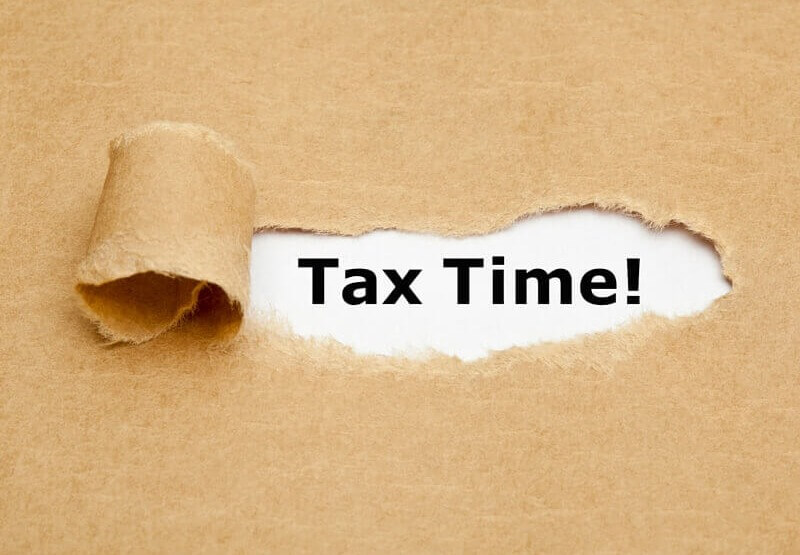Editor’s note: This is a guest post by Jennifer Clark, Content Marketing Manager at TaxJar

Tax-free weekends are nothing new. And over the last 10 years, they’ve become a holiday of their own that savvy shoppers plan around. Sales tax holidays offer no sales tax requirement on purchases of back-to-school items, extreme weather, and emergency preparedness have the potential to increase sales for both brick and mortar stores and online retailers alike.
This year, there are 17 states offering some form of a sales tax holiday, typically in the summer months. Discounts range from specific items like computers or generators, while other states have a discount across the board.
It’s important to know that the same states don’t always offer sales tax holidays or tax-free weekends each year. And, not all states that offer holidays have to acknowledge them. Some of these sales holidays are recurring and part of the state’s legislation, while others that are non-annual require legislation to pass each year. For a complete listing of the 2019 states with sales tax holidays, here’s a current state-by-state guide.
Sales Tax Holiday History
To step back a minute, let’s look at the history of sales tax holidays. A relatively new concept, tax-free shopping days began in New York in 1997. Designed to encourage shoppers to stay in New York to purchase their clothes, the state enacted a tax-free holiday to keep them from going to neighboring New Jersey, which had no sales tax on clothing.
To promote spending, state politicians looked at sales tax holidays as a favorable way to encourage their constituents to purchase goods from retailers in the area. Whether the states’ budgets are in surplus or shortage, tax-free days could be a win for politicians looking to save taxpayers money during popular spending seasons.
Further, back-to-school holidays can be viewed as a state’s way of assisting families in need with the ever-expanding costs of educational supplies. Holidays like Severe Weather Preparedness Day in Florida or Alabama can help people prepare for possible disasters or aid after a flood or hurricane when they need help most.
Do Sales Tax Holidays Actually Drive Spending?
As hopeful and positive as sales tax holidays are in their intentions to drive economic growth, there is ongoing debate over whether they actually encourage people to buy products and provide the revenue boost some economists predict.
In recent years, according to the National Retail Federation, parents went into August with 45 percent of their back-to-school shopping already completed. But in 2017, back-to-school weekend spending accounted for more than Mother’s Day, Fathers’ Day, Easter, and Valentine’s Day spending combined.
Is this a coincidence?
Some argue that sales tax holidays don’t actually encourage spending but rather just shift spending to a different time of year. And, it’s been noted that some retailers increase prices so that discounted items aren’t truly a better buy after all.
The Federal Reserve reported on the effects of sales tax holidays on consumer spending by citing an experiment in Massachusetts. The report suggested that a sales tax holiday prompted a net boost to retail spending over the whole month, rather than just a re-timing of spending within the month.
What Should Retailers Do?
So, if it remains unseen whether tax-free holidays truly impact businesses or not, what should retailers do? Shoppers typically rejoice anytime there is a planned sale, but retailers often face added complexities around collecting sales tax when some items are or aren’t taxable. As a whole, it’s a good practice to honor the sales tax holidays in the states where you do business. With customers planning around tax-free deals and shopping the best sales, you don’t want to miss out.
Knowing that some online platforms make it difficult to pause sales tax collection could put sellers off of the idea. Amazon, for example, will honor sales tax holidays on school supplies, if your settings are configured correctly around item product tax codes. With this in mind, you’ll want to make sure your marketplace and checkout settings are configured accurately.
So, how can you prepare for these holidays?
First, figure out which states have sales tax holidays and if you have sales tax nexus in those states. If you don’t, then the sales tax holidays won’t affect you from a sales tax perspective. Just remember, even if you don’t have nexus in one state today, the laws are changing rapidly and some states will pass a sales tax holiday bill shortly before the sales tax holiday occurs. So, be sure to check back close to the actual holiday weekend.
Next, determine if the products are taxable, and at what rates. For the states where you have sales tax nexus, you’ll want to determine if your products are subject to the sales tax holidays in that state. For example, if you’re a clothing store but your state is only exempting energy-efficient appliances, then you’re probably going to be unaffected by any sales tax holidays.
Once you’re aware that what you’re selling is tax-free during a specific date range, you’ll want to make sure your shopping cart and marketplaces are set up in order to be compliant. At this time, not all shopping carts and marketplaces automatically handle tax-free holidays, so be sure to configure your systems for the right type of exemption.
Amazon, for example, won’t tax products with the product tax code “A_SCHL_SUPPLS” in states with a “Back to School Sales Tax Holiday,” if your product tax codes are set up correctly. You can read a guide to Amazon Product Tax Codes here.
Whether you decide to offer products tax-free on major sales tax holidays or not, outsourcing your sales tax to an automated solution like TaxJar will provide peace of mind around ensuring your shopping carts and product tax codes are correct and your shoppers remain satisfied customers.
 Jennifer Clark, TaxJar’s Content Marketing Manager, aims to simplify sales tax for eCommerce retailers through enjoyable, engaging content. A long-time writer, Jennifer enjoys tackling complex subjects, researching sales tax and SaaS industry news, and interacting with the digital TaxJar community through social media.
Jennifer Clark, TaxJar’s Content Marketing Manager, aims to simplify sales tax for eCommerce retailers through enjoyable, engaging content. A long-time writer, Jennifer enjoys tackling complex subjects, researching sales tax and SaaS industry news, and interacting with the digital TaxJar community through social media.





3 Responses
We are a small company that holds a US Patent on a No-Tie Apron. We don’t have a huge Marketing budget let alone a huge inventory. Our lead time to make our aprons is approx 5 business days based on an order of 200 aprons.
What would be our initial and recurring costs to receive orders from Amazon and ship our aprons from our location to the Amazon customer?
Hi Hank,
Thanks for your comment. We need more details about your business in order to answer your question. Reach out to us here and we’ll try to help.
Cheers!
Maria
nice post . thanks for sharing…